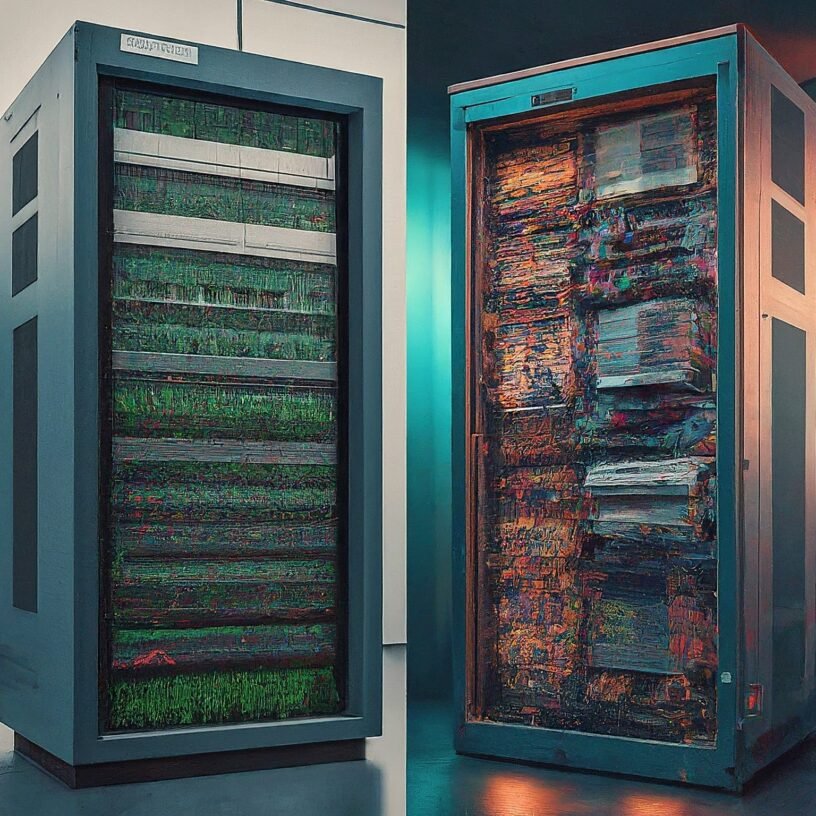Although it has been predicted for decades that mainframes will eventually die, these sturdy computers still function. Is mainframe computing really a thing of the past, with cloud computing growing rapidly and new technologies appearing every day? In-depth discussion of mainframes’ continued applicability in the current tech environment is provided in this article.
Why the “Mainframes are Dead” Narrative Persists:
- Age: Mainframe technology originated in the 1950s, making it undeniably “old.” Newer, flashier tech often holds the spotlight, leading to misconceptions about mainframe capabilities.
- Complexity: Mainframes have intricate configurations and specialized programming languages, often perceived as difficult and expensive to maintain.
- Cloud Hype: The cloud’s scalability and agility appear attractive compared to the perceived rigidity of mainframes, fueling migration considerations.
But Hold On! Here’s Why Mainframes Remain Relevant:
- Unsurpassed Security and Reliability: Mainframes boast robust security features and exceptional uptime, making them ideal for mission-critical systems in finance, healthcare, and government.
- Unmatched Transaction Processing: They excel at handling enormous volumes of transactions with lightning speed, essential for banks, airlines, and retailers.
- Data Powerhouse: They can store and manage vast amounts of data efficiently, a key advantage for companies dealing with sensitive or complex information.
The Future of Mainframes: Collaboration, Not Oblivion:
The future probably holds a collaborative model instead of a total replacement. Mainframes can concentrate on what they do best—securing vital data and handling large volumes of transactions—by having non-essential tasks offloaded from them by modern technologies. By utilizing mainframes for stability and security and the cloud for agility, organizations can take advantage of hybrid architectures.
In summary, mainframes are changing but aren’t completely gone. They will always be relevant in some contexts thanks to their special strengths, which include security, dependability, and transaction processing capacity. A hybrid strategy that makes use of both mainframes and contemporary technologies may be the most tactical choice as businesses navigate the rapidly evolving tech landscape.
What are your thoughts on the future of mainframes? Let’s continue the conversation in the comments below! Share your experiences and insights to enrich this discussion.
Here are few frequently asked questions on Mainframe:
What do you mean by a mainframe?
A mainframe is a powerful computer designed to handle large amounts of data and many users at the same time. They are known for their reliability, security, and ability to process massive amounts of information quickly. Mainframes are typically used by large organizations like banks, insurance companies, and government agencies to run critical applications that require high uptime and data security.
5 Mainframe Computer Examples:
While the mainframe market is dominated by a few vendors, here are some examples of mainframe computers:
- IBM z15: This is a current high-end offering from IBM, known for its processing power and security features.
- Unisys ClearPath Libra: This mainframe is based on Unisys’s earlier acquisitions and offers a robust platform for enterprise use.
- Hewlett Packard Enterprise NonStop: While some classify this as a different type of system, it shares characteristics with mainframes in terms of its focus on reliability and high availability.
- Hitachi AP10000 series: These mainframes are co-developed with IBM and offer high-performance computing for demanding tasks.
Are mainframes still used today?
Yes, mainframes are still widely used in critical business applications today. Their emphasis on security and reliability makes them ideal for tasks like:
- Financial transactions processing (e.g., credit card payments)
- Large-scale data analysis
- Inventory management in complex supply chains
- Running core banking systems




Leave a Reply